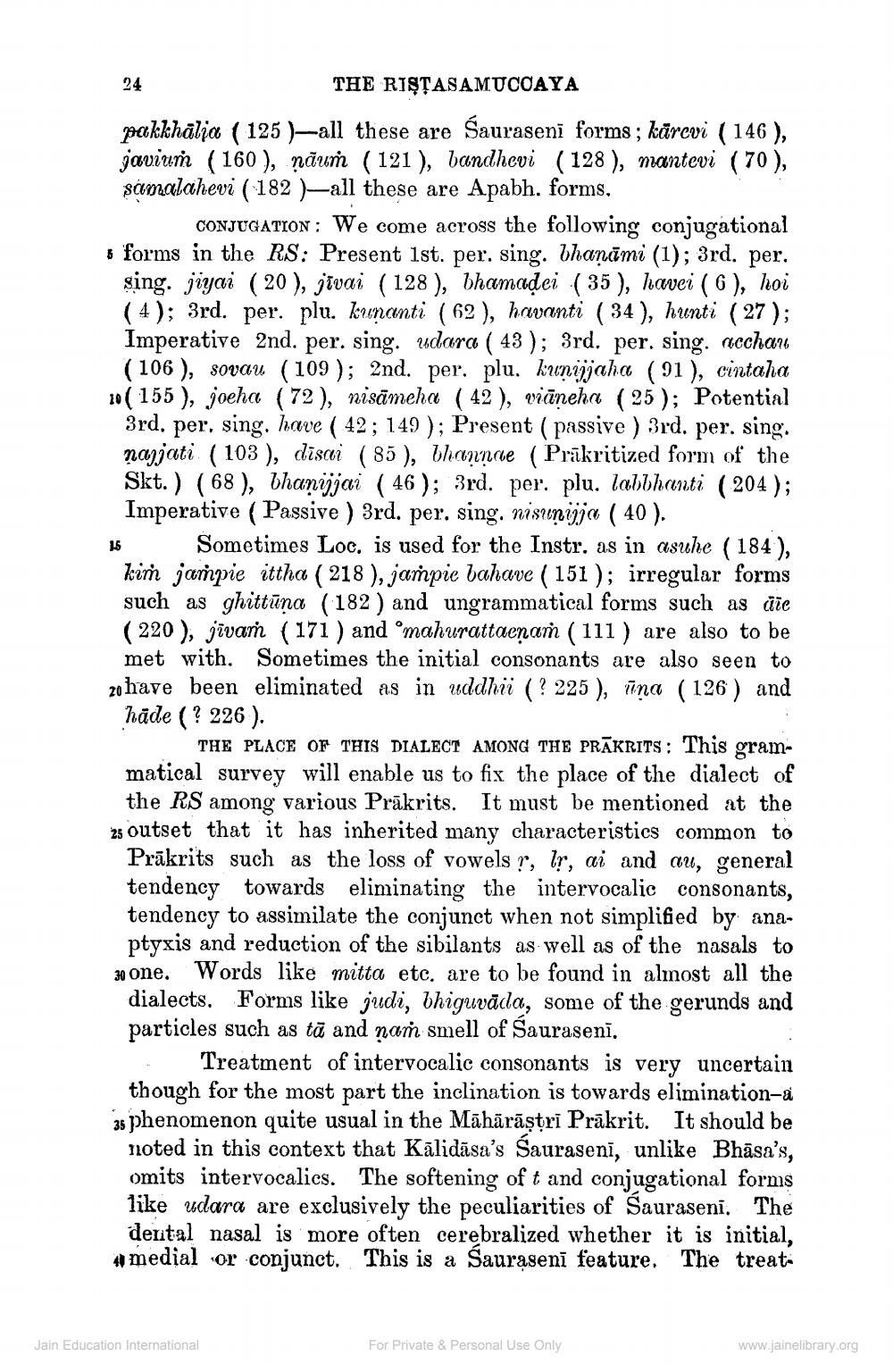________________
24
THE RIŞTASAMUCCAYA pakkhälja ( 125 )-all these are Sauraseni forms; kärcvi ( 146 ), javium ( 160 ), nõuń (121 ), bandhevi (128 ), mantevi ( 70 ), samalahevi ( 182 )—all these are Apabh. forms,
CONJUGATION : We come across the following conjugational • forms in the RS: Present 1st. per. sing. bhanāmi (1); 3rd. per.
sing. jiyai ( 20 ), jivai ( 128 ), bhamadei (35), havei (6), hoi (4); 3rd. per. plu. kunanti ( 62 ), havanti (34), hunti ( 27 ); Imperative 2nd. per. sing. udara ( 43 ); 3rd. per. sing. acchar (106), sovau. (109); 2nd. per, plu, kunijjaha ( 91 ), cintaha 10( 155 ), joeha ( 72 ), nisāmeha ( 42 ), viāneha ( 25 ); Potential
3rd. per, sing. have ( 42 ; 149 ); Present (passive ) 3rd. per. sing. najjati ( 103 ), disai ( 85 ), thannae (Prākritized form of the Skt.) (68), bhanijai ( 46 ); 3rd. per. plu. labbhanti ( 204 );
Imperative (Passive ) 3rd. per. sing. nisuņijja ( 40 ). 16 Sometimes Loc. is used for the Instr, as in asuhe (184), kim jampie ittha ( 218 ), jampie bahave ( 151 ); irregular forms such as ghittūna (182 ) and ungrammatical forms such as die (220), jīvam (171 ) and 'mahurattaenam (111) are also to be met with. Sometimes the initial consonants are also seen to zo have been eliminated as in uddhii (? 225 ), ina (126) and hāde (? 226 ).
THE PLACE OF THIS DIALECT AMONG THE PRĀKRITS : This grammatical survey will enable us to fix the place of the dialect of
the RS among various Prākrits. It must be mentioned at the 25 outset that it has inherited many characteristics common to
Prākrits such as the loss of vowels ?, Ir, ai and au, general tendency towards eliminating the intervocalic consonants, tendency to assimilate the conjunct when not simplified by anaptyxis and reduction of the sibilants as well as of the nasals to 30 one. Words like mitta etc. are to be found in almost all the dialects. Forms like judi, bhiguvāda, some of the gerunds and particles such as tā and nam smell of Saurasenī.
• Treatment of intervocalic consonants is very uncertain though for the most part the inclination is towards eliminationas phenomenon quite usual in the Māhārāștri Prākrit. It should be noted in this context that Kālidāsa's Saurasenī, unlike Bhāsa's, omits intervocalics. The softening of t and conjugational forms like udara are exclusively the peculiarities of Sauraseni. The deutal nasal is more often cerebralized whether it is initial, emedial or conjunct. This is a Saurasenī feature. The treat
Jain Education International
For Private & Personal Use Only
www.jainelibrary.org




